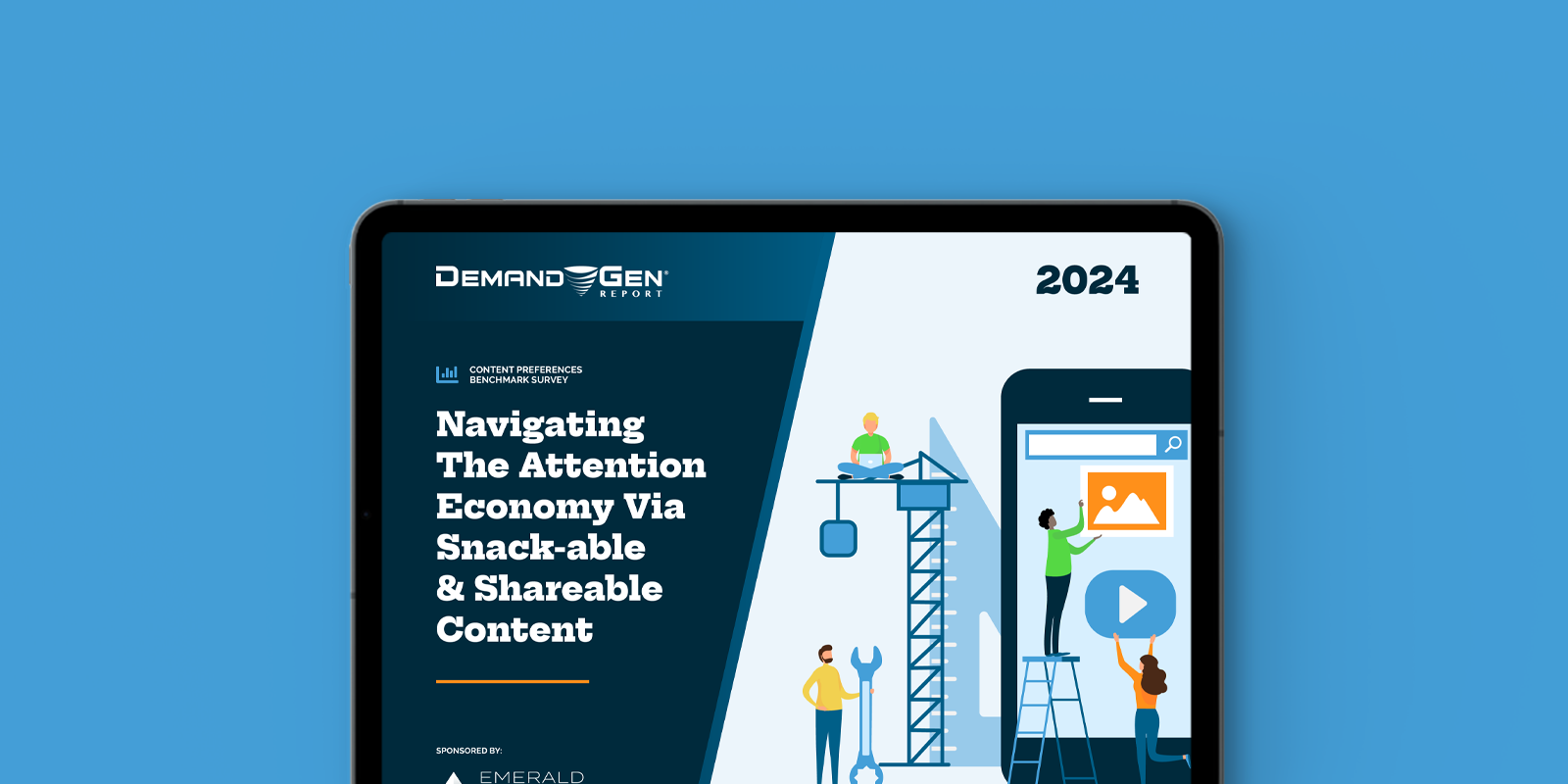The 2024 Content Preferences Benchmark Survey
Independent, collaborative and communicative are the three primary adjectives attributed to B2B prospects and buyers, as the “2024 Content Preferences Benchmark Survey” revealed that content preferences are shifting away from long-winded, gated pieces into shareable, social-friendly assets. When asked about how they used content to inform their research/decision-making over the past 12 months:
- 89% of survey respondents downloaded and consumed assets they found themselves;
- 72% shared content with relevant team members and, of the colleagues who received content, 57% downloaded and consumed those assets; and
- 46% reviewed more content on social media.
Interestingly, despite buyers’ marked preference for self-service journeys, it appears that B2B practitioners backslid into old (read: bad) habits. For example, 51% of buyers said content was too generic and irrelevant to their needs in 2024, while just 38% had the same grievance in 2023. Similarly, another 51% indicated there were too many steps involved to access content, which only 30% griped about in 2023. When asked to dive deeper into their content consumption peeves, respondents pointed to:
- An overwhelming amount of available content 56%
- Content is not objective/too much of a sales pitch 54%
- Uninformative or boring content 39%
In other words? Ouch!
But here’s the good news: Practitioners who might have missed the mark in 2023 are primed to hit the bullseye by adapting their content structure to better align with prospect and customer demands. Throughout this report, we’ll discuss the evolution of content preferences over the past 12 months, with a focus on:
- Buyers’ preference for shorter content formats that concisely convey relevant information;
- Why buyers value content that can be easily shared with colleagues and across social media platforms;
- How the increasing reliance on mobile devices for consuming content requires optimizing content for mobile viewing and sharing;
- The role of visual elements such as infographics and videos and images to enhance the digestibility of content; and
- The role of actionable insights or valuable takeaways in a condensed format to help buyers quickly grasp content.
The Shift Toward Shorter, Digestible Content
Perhaps one of the most unique nuances of the self-service buyer is the speed they consume content — as prospects and buyers put the bulk of the research and decision-making processes on themselves, they’re opting for quick content that’s easier to digest. Specifically, when asked about the content formats that they found most valuable in their decision-making process, the top two answers were short-form content (67%) and webinars/digital events (65%). Webinars, in particular, experienced significant growth over the past year, as only 52% of buyers found them valuable in 2023.
Keeping Pace With Accelerating Buyers’ Journeys
Further reflecting buyers’ haste in their journeys is the drop in interactive content’s appeal, as just 38% found it to be a draw — compared to 49% in 2023.
Of course, buying journeys are never one size fits all — but one size does fit most. While the needs of individual prospects and buyers will (obviously) vary, there are some guidelines in place that marketers can follow.
Understanding & Implementing Feedback
While it’s always nice to know the content preferences of buyers in a general sense, it’s also important to determine what’s resonating with them and what’s not. When we handed the survey respondents the microphone to share advice with our readers, the first area they tackled was organization. Solution/product 48%






